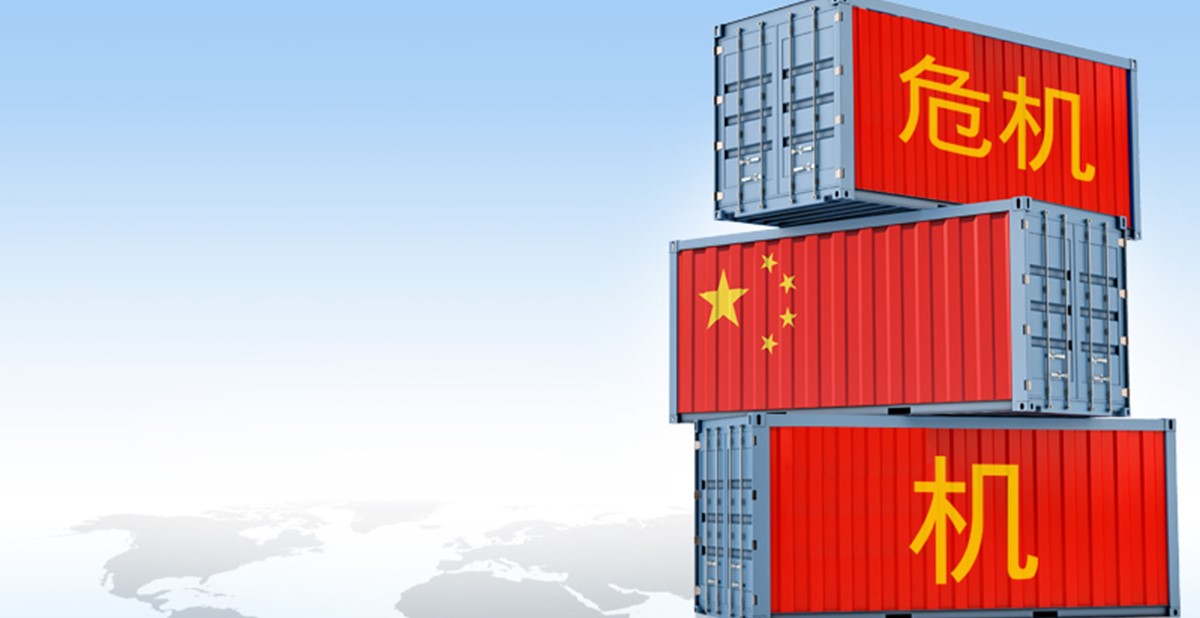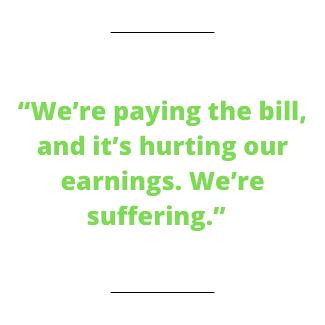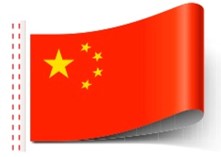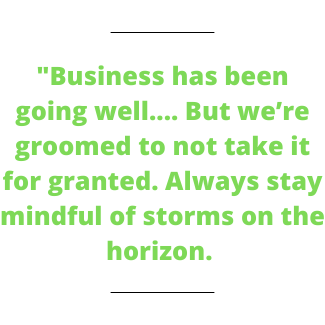Crisis Or Opportunity?

Aayam 4D / Shutterstock.com
China is a manufacturing powerhouse. Known as “the world’s factory,” China is the world’s largest manufacturer in terms of output. The country’s GDP reached $17.7 trillion in 2021, up $3 trillion from 2020. This year, China is targeting to grow another 5.5%.
Outside of textiles, nearly every promotional product comes from China—or has components from the country. China’s speed, low labor rates and strong manufacturing capabilities have made it a global manufacturing hub and the go-to source in the promotional products industry.
China is the world’s second-largest economy behind the United States and its most populous nation with 1.4 billion people. But the country is changing rapidly. So is the relationship between China and the U.S.—and China and the world.
Is the promotional products industry ready for what comes next?

Doing business in one of the world’s most dynamic countries has become increasingly complicated. First came the China tariffs in 2018, leading the world’s two largest economies to engage in a bitter trade war. Some economists say the U.S.-China trade war could go on for years.
The United States currently imposes a 25% tariff on approximately $250 billion of imports from China and a 7.5% tariff on approximately $112 billion worth of imports from China, according to the Tax Foundation. Chinese tariffs on American products are about 20%. Before the U.S.-China trade war, U.S. tariffs on Chinese goods were on average 3.1%, while China’s tariffs on American goods were about 8%.
While meant to punish China for its unfair economic policies, the tariffs that were started by the Trump Administration ended up harming the U.S. Multiple studies have shown that U.S. importers and consumers have primarily paid for the tariffs.  Ben Zhang, president and CEO of Greater Pacific, says his company builds the tariff into the prices he charges distributors. His distributor clients then do the same with their end-buyer clients. “Who eventually pays the price? Not China factories—American businesses,” Zhang says. “We’re paying the bill, and it’s hurting our earnings. We’re suffering.”
Ben Zhang, president and CEO of Greater Pacific, says his company builds the tariff into the prices he charges distributors. His distributor clients then do the same with their end-buyer clients. “Who eventually pays the price? Not China factories—American businesses,” Zhang says. “We’re paying the bill, and it’s hurting our earnings. We’re suffering.”
After the tariffs came COVID-19, causing economies to grind to a halt. Since the beginning of the pandemic in 2020, China has instituted a strict zero-Covid policy to crush outbreaks and chains of transmission. The central government enforces large-scale lockdowns, mass testing and international travel bans as part of its zero-Covid strategy.
China’s strict approach over the past two years has created numerous bottlenecks in the global supply chain, with factory shutdowns and logistics closures. However, experts doubt the country will change its strategy. In March, China locked down tens of millions of people as it experienced its largest Covid outbreak in two years. With the world seemingly turning a corner on the pandemic following the Omicron variant’s global spike this winter, China’s shutdown affected 19 provinces, including Shenzhen, which is key to supply chains because of its ports.
In the wake of the debilitating trade war and pandemic came supply chain snarls that entangled the world. Every aspect of the global supply chain was upended, from the factories manufacturing items to the cargo ships to transport the goods to backlogs at ports to unload the shipments.
Zhang says that while it used to take about a week to get freight once it arrives in the port, it may now take months. And once a shipment clears customs, there may not be a truck driver to transport the goods. This leads to a domino effect. Suppliers like Greater Pacific can’t bill distributors for undelivered freight. Distributors can’t bill their clients. And end buyers purchasing promotional products must wait several months—time they often don’t have—to get their goods in hand.
Companies shipping products from China are shelling out substantially more than they did pre-pandemic. Zhang says that a typical 40-foot container from China used to cost $3,000-$4,000, but now costs anywhere from $18,000-$25,000. “It’s unbelievable, but we have to pay it. We have no choice,” he says.
Brennan Mulligan, founder and CEO of California-based Skyou, has never seen anything like it. “Everybody says it’s unprecedented, but it applies in this case,” he says. “Everyone was blindsided.”

Rather than waiting for the supply chain to iron itself out, some suppliers, including Mulligan, are nearshoring some or all of their products. This tactic lets companies bring their manufacturing operations closer to the U.S. Nearshoring allows for quicker turnaround and lower travel costs while, in many cases, eliminating or reducing language barriers.
Earlier this year, Skyou acquired OTC & Apparel and its sports apparel brand, Shark Sportswear, LLC. With the capability to produce in both Guangzhou, China and Tijuana, Mexico, Mulligan can better serve low-minimum-quantity clients quickly from Tijuana while still benefiting from China’s scale and supplier ecosystem.
When the pandemic struck in 2020 and Mulligan couldn’t travel to his factory in China, he knew it was the time to set up production in Mexico. Instead of embarking on a roughly 14-hour flight from California to China (plus completing a mandatory three-week quarantine upon landing), Mulligan is just a 5-mile drive to his factory in Mexico.
Mexico’s labor rates are also similar to rates in South China. “It’s fascinating to me that we can get China labor rates right across the border,” Mulligan says.
His big challenge now lies with sourcing. Most of his company’s raw materials come from China, and he has been trying to find suppliers in Mexico or other countries like  Vietnam. “The manufacturing capabilities and ecosystem are still quite limited in Mexico,” Mulligan says. “But companies that are buying products from China should find two other suppliers from two other countries so they’re not so dependent on sourcing those products exclusively from China. China isn’t going to be the one-stop shop it has been in the last three decades.”
Vietnam. “The manufacturing capabilities and ecosystem are still quite limited in Mexico,” Mulligan says. “But companies that are buying products from China should find two other suppliers from two other countries so they’re not so dependent on sourcing those products exclusively from China. China isn’t going to be the one-stop shop it has been in the last three decades.”
Mulligan says this isn’t just a result of the ongoing trade war and the pandemic, but also China’s changing demographics. By 2040, the United Nations estimates that the country will have lost 10% of its workers as its population ages. In 2021, people ages 60 and older made up nearly one-fifth of the Chinese population. China’s once-a-decade census released in 2020 revealed the slowest population growth rate since the 1950s.
The tides are turning for many businesses in how much they depend on China. Some of the world’s largest companies are shifting manufacturing from China to other countries, many of them closer to home. Among those leaving include Nike, Apple and Samsung. While these companies aren’t fully retreating from China yet, they may represent the start of a mass exodus. One-third of supply-chain leaders plan to move at least some of their manufacturing out of China by the end of 2022, according to research firm Gartner.
Nearshoring doesn’t come without its challenges for promotional products suppliers, though. Jing Rong, VP of global supply chain and compliance at HPG Brands, says that the infrastructure in countries like Mexico and many in Africa isn’t quite there yet. But it’s coming, she hopes. “I think the promotional products industry will follow retail,” Rong says. “As retailers like Walmart and Target build the infrastructure in other countries, we can hopefully take advantage of that.”
Working with other countries might be ideal for smaller orders or orders with long timelines. But Zhang says that most of the promotional products industry operates on such short timelines that buying from China is often the only option. 
“We’ve gone through many headaches and hassles trying to work with countries outside of China,” he says. “Our final conclusion is that if we have a tight schedule, China is still the best option. They deliver fast and they’re more established than other countries in the South Pacific. I’m not praising China, but it’s hard to beat China’s speed.”

Doing business in China means promotional products companies must also make careful ethical decisions. They may unintentionally participate in the Chinese government’s alleged crimes against humanity, specifically involving the Uyghur Muslims. Since 2016, the Chinese government has detained an estimated 1.5 million members of the Muslim ethnic minority in what have been described as prison camps, reportedly separating children from parents, destroying mosques and subjecting people to forced labor.
To combat these atrocities, President Biden signed the Uyghur Forced Labor Prevention Act into law in December 2021. The new law seeks to ensure that American companies do not buy goods from China’s Xinjiang Uyghur Autonomous Region, and therefore do not fund forced labor in the region.
HPG Brands’ Rong worries about how the law will be enforced. “For a product like a t-shirt, you have to look at so many layers, beginning with the cotton that is picked from field and then the cutter, the spinner and the sewer. It’s going to be hard to enforce,” Rong says. “Almost all cotton from Asia comes from China. If someone is buying a cotton-type material from Vietnam or Cambodia, it’s most likely coming from China. If companies are honest with themselves, they’ll say any cotton from China needs to be sourced from somewhere else.”
Promotional products buyers—especially Fortune 100 and Fortune 500 companies—are looking for that accountability, according to Kevin Walsh, president of Showdown Displays and a PPAI board member. “They want to know where all the components of their products are coming from,” he says. “Being able to account for that in the entirety will become increasingly important. If you don’t have great partners in China, it’s difficult to know where all the items are coming from.”
Walsh is hopeful that the act will motivate companies to look for manufacturers and supplier partners in countries such as Mexico, or across Europe and Africa. “The default to go to China as a solution is in question. Businesses are increasingly looking at alternative sources as a way to diversify and rely less on China,” he says.
Promotional products companies don’t have to figure it out on their own. PPAI has followed this issue for years and offers guidance for tracking where goods, including components and raw materials, are manufactured. Visit PPAI.org/Corporate-Responsibility for resources.
Another ethical concern involves China’s alliance with Russia. In March, China pledged about $790,000 in humanitarian aid to Ukraine, but did not condemn Russia’s attack on Ukraine. China’s foreign minister, Wang Yi, said that the two countries would maintain strategic strength despite the Ukraine crisis and that the country’s relationship with Russia, with which it shares a border, is “rock solid.”
Many industry leaders believe the war will only further complicate the current supply-chain issues.
“There’s so much uncertainty,” Rong says. “We need to keep a close eye on what’s happening around the globe. That will help us determine if we should continue to purchase overseas or if it may be better to nearshore.” 
Walsh adds that Russia’s invasion of Ukraine is so unprecedented that it’s difficult to understand what the mid- and long-term effects will be. “Companies always have to be asking how could that and how will that impact us. Do scenario planning on a week-to-week and month-to-month basis,” he says. “Business has been going well in the promotional products industry and for my company for several months. But we’re groomed to not take it for granted. Always stay mindful of storms on the horizon.”

China may be the world’s manufacturing superpower, but the country could be losing its allure. Most advanced economies such as the United States, the United Kingdom and Australia view China unfavorably, according to a Pew Research Center survey. U.S. government representation was absent from the stands at the Winter Olympics in Beijing. Confidence levels in Chinese President Xi Jinping have plummeted to near historic lows.
China has an increasingly troublesome image problem, and many promotional products companies are wary of continuing to rely too heavily on the country. Instead, they are proactively planning and exploring other options.
“China is the world’s factory, but it may not be the best bet going forward,” Skyou’s Mulligan says. “Companies that are relying on products primarily coming from China should diversify their supply chain. Many larger, consumer-facing brands are being specific about making sure their products are not coming from China.”
At Showdown, Walsh says he will continue to work closely with his suppliers in Asia. He encourages companies to nurture their business partners and continue to build upon those relationships.
“But in the meantime, make sure you put a Plan B, Plan C and Plan D into place,” he says. “You just don’t know what’s on the horizon.”

It’s hard to call something “good business” if people are negatively affected by it through no fault of their own. China’s ethical conflicts are not getting easier to parse, and you should know what the top concerns are before deciding if and how you will source materials from there.

Crimes Against Humanity:
Since 2016, the Chinese government has reportedly detained 1.5 million Uyghur Muslims in prison camps. The Uyghur Forced Labor Prevention Act of December 2021 is meant to prevent American companies from funding forced labor.
 Ties to Russia:
Ties to Russia:
As of the publishing of this issue, China had yet to join the United States and much of the world in condemning Russia’s invasion of Ukraine. China’s relationship with Russia is of concern during these tumultuous times.
 A More Repressive Regime:
A More Repressive Regime:
The regime of China’s President Xi Jinping has rolled out policies that resulted in more religious persecution, less freedoms in Hong Kong, and a greater surveillance state.
Will An Aging Demographic Slow Down China's Workforce?
Can China continue to be seen as the speediest country for manufacturing? There’s no doubt that the country has infrastructure that most competitors cannot match, but the biggest factor in its speed is China’s massive workforce aiding in logistics. But that dynamic may be temporary. In 2021, people ages 60 and older made up nearly one-fifth of the Chinese population. That is a demographic that is either already out of or soon to be exiting the workforce.
The reality is that this was likely a long time coming. Population boomed so rapidly in China during the 1960s and 1970s that there were national food and housing shortages. From 1980 through just last summer, the government imposed limits on how many children a family could have. Population growth slowed gradually, and recently, economic conditions have resulted in many couples voluntarily having no more than one child.
China’s 2020 census revealed the slowest population growth since the 1950s. The Washington Post reported that by 2030 one-fourth of the Chinese population will be over 60. By 2040, the United Nations believes the country will have lost 10% of its current workers as they age out.
![]()
Spencer Loveless, CEO of additive manufacturing companies Dustless Technologies and Merit3D, is an advocate for keeping production stateside.
 Q: Cost is obviously what drives businesses to offshore manufacturers, including China. What’s the counterargument to that for products made in America?
Q: Cost is obviously what drives businesses to offshore manufacturers, including China. What’s the counterargument to that for products made in America?
A: Speed to get your product. Also, many times you get net 30 terms, so as a manufacturer you get four to five more months on your money.
Q: How do consumers react when they know a product is made in the U.S. rather than overseas? Do we know that they place more value in it, or assume it’s a higher quality?
A: People frown on products made in China vs. the USA, but in today’s market it is more important to get the best product. Reviews on Amazon are what drive most people to buy a product.
Q: What has been the result of your commitment to manufacturing in the U.S. rather than China?
A: The result of our commitment is, since we are not trying to beat China at their game, we think we can win. If we did the same things they are doing, like injection molding, then it would be much harder for us. Since we are doing mass additive manufacturing, which brings our suppliers many benefits over injection molding, they are willing to move and change their process for manufacturing.
Audrey Sellers is a Dallas-Fort Worth based writer and former associate editor at PPAI.

